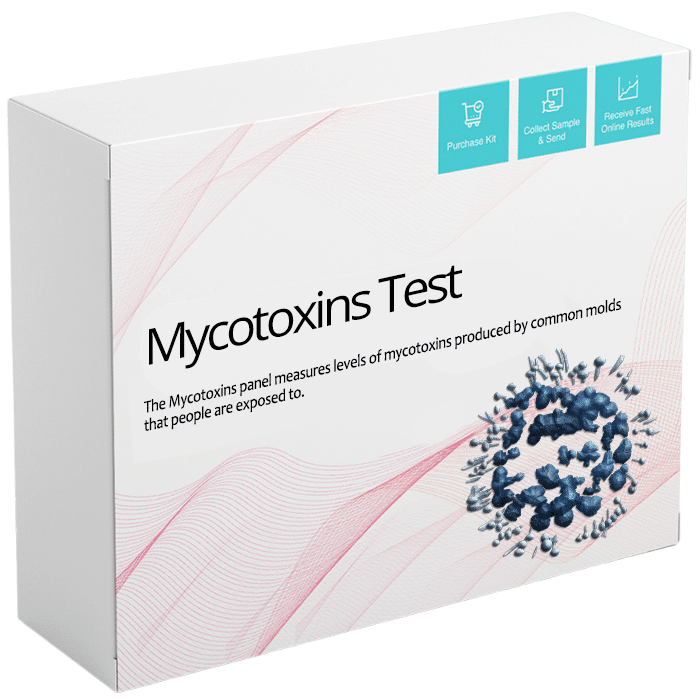Just How Mycotoxin Screening Assists Protect Against Contamination and Protect Food Products

Mycotoxin testing is an important practice in the food market, working as a frontline defense versus contamination by hazardous toxins created by mold and mildews. Via the application of innovative techniques like High-Performance Liquid Chromatography (HPLC) and Liquid Chromatography-Mass Spectrometry (LC-MS), food producers can precisely spot and measure mycotoxin degrees in farming products. This positive strategy not just guarantees conformity with rigorous safety policies but additionally minimizes health risks to consumers. Furthermore, normal screening strengthens brand track record and economic health by decreasing contamination-related incidents. So, how precisely do these screening procedures incorporate right into the wider food safety approach?
Understanding Mycotoxins
Recognizing mycotoxins starts with recognizing that they are toxic secondary metabolites generated by certain molds, which can contaminate farming items. These metabolites are not necessary for the growth or recreation of the fungi however can have extreme effects for animal and human health. Mycotoxins are commonly found in staple plants such as corn, wheat, barley, and nuts, where they can proliferate under particular problems of wetness and temperature level.
There are several kinds of mycotoxins, each generated by different fungal species. Aflatoxins, created by Aspergillus types, are among one of the most well-known, recognized for their carcinogenic homes. One more considerable group includes ochratoxins, produced by Aspergillus and Penicillium varieties, which have nephrotoxic impacts. Fusarium types generate trichothecenes and fumonisins, both of which are connected with numerous intense and chronic wellness problems.

Risks of Mycotoxin Contamination
The risks of mycotoxin contamination are complex, positioning substantial threats to both food safety and public wellness. Mycotoxins, hazardous compounds generated by certain kinds of fungis, can infect a variety of agricultural items including grains, nuts, flavors, dried fruits, and coffee. As soon as these toxic substances infiltrate the food supply, they can bring about severe health concerns such as liver damages, kidney failure, and also cancer. Vulnerable populaces, including youngsters, the elderly, and immunocompromised people, are especially in jeopardy.
Financial effects are an additional significant worry. Contaminated plants can cause significant financial losses for farmers and food producers as a result of decreased yields and the demand for costly decontamination procedures. Global profession can be considerably impeded as nations apply strict mycotoxin policies to secure their populaces, leading to rejected shipments and strained trade connections.
Ecological elements such as climate modification aggravate the threat of mycotoxin contamination. Variations in temperature and moisture can develop beneficial problems for fungal development, increasing the possibility of contamination occasions. Hence, understanding and reducing these dangers are essential for ensuring the safety and stability of worldwide food materials.
Approaches of Mycotoxin Examining
Properly identifying mycotoxin contamination in agricultural items is crucial for safeguarding public health and wellness and keeping food safety and security criteria. Numerous approaches are used to detect and quantify mycotoxins, each offering particular advantages and restrictions.
High-Performance Liquid Chromatography (HPLC) is a commonly utilized technique because of its high level of sensitivity and accuracy. It includes dividing mycotoxins from other substances in a sample, enabling accurate quantification. Liquid Chromatography-Mass Spectrometry (LC-MS) combines liquid chromatography with mass spectrometry to provide detailed molecular details, making it specifically beneficial for identifying numerous mycotoxins concurrently.

Gas Chromatography-Mass Spectrometry (GC-MS) and Thin-Layer Chromatography (TENDER LOVING CARE) are additionally utilized, you can find out more each with special applications. GC-MS works for unstable mycotoxins, while TLC provides an easier, affordable alternative for preliminary testing.
Advantages of Normal Examining
Normal screening for mycotoxins in agricultural products offers numerous advantages, dramatically adding to public health and wellness and food safety. By identifying contamination early, regular testing aids protect against the circulation of hazardous foods, consequently minimizing the danger of mycotoxin-related health problems among consumers. This aggressive technique not just safeguards human health however also enhances the total top quality of food products.
Regular screening additionally sustains governing compliance. Different countries and regions have established strict limits for mycotoxin levels in food and feed. Complying with these limits through regular screening guarantees that vendors and producers fulfill legal criteria, therefore avoiding charges and trade obstacles. Keeping compliance fosters customer depend on and brand name track record, which are essential for market success.
In addition, normal mycotoxin testing can bring about significant financial benefits. Early discovery of contamination permits prompt treatment, find this minimizing possible losses from extensive contamination. Implementing routine screening protocols can likewise decrease recall prices and related responsibilities, which can be monetarily devastating.
Additionally, regular screening provides useful data that can educate far better farming methods and storage problems. By recognizing patterns of contamination, producers can adopt safety nets, therefore adding and minimizing future risks to the sustainability of the food supply chain.
Applying Testing Methods
Implementing effective mycotoxin screening methods is essential for guaranteeing the safety and security and top quality of agricultural items. Establishing a robust screening framework entails several crucial actions, beginning with the recognition of possible contamination points within the manufacturing and supply chain. This consists of pre-harvest, post-harvest, storage space, and distribution stages. Each stage has to be scrutinized to determine where mycotoxin contamination is more than likely to take place.
When crucial control points are determined, picking proper testing approaches is crucial. Typical techniques consist of enzyme-linked immunosorbent assay (ELISA), high-performance liquid chromatography (HPLC), and mass spectrometry (MS) Each approach has its strengths and weak points; hence, selecting the right one depends upon the details mycotoxin being tested, the needed level of sensitivity, and offered sources.

Finally, integrating the screening methods right into an extensive food safety administration system is recommended. This boosts traceability and makes it possible for speedy restorative activities when contamination is discovered, therefore protecting the integrity of the learn the facts here now food supply chain.
Verdict
Mycotoxin screening is necessary in avoiding contamination and safeguarding food supplies by making it possible for early detection of unsafe toxins generated by molds in agricultural items. Advanced approaches such as HPLC and LC-MS make certain compliance with security policies and safeguard customers from wellness dangers. Regular screening enhances brand name online reputation, economic security, and trust in food security by reducing contamination-related losses and maintaining high criteria in food manufacturing. Executing rigorous screening methods is hence critical for the sector's overall health.
Mycotoxin screening is a crucial method in the food sector, offering as a frontline defense against contamination by damaging toxic substances created by molds. An integrated strategy including farming practices, storage monitoring, and regular testing can reduce the threats associated with mycotoxin contamination, ensuring food safety and security and public health and wellness.
The threats of mycotoxin contamination are diverse, posturing considerable dangers to both food security and public wellness.Routine testing for mycotoxins in agricultural items supplies numerous benefits, considerably adding to public health and food safety and security.Mycotoxin testing is crucial in stopping contamination and safeguarding food products by allowing very early discovery of dangerous toxic substances created by mold and mildews in farming products.